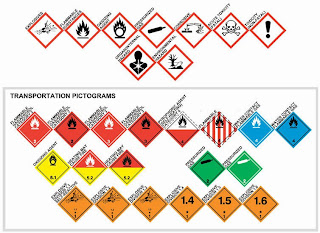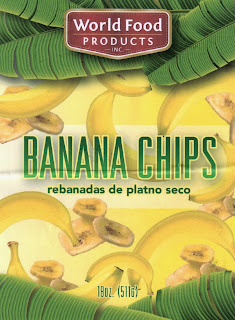NFPA 704 is a standard
system for the Identification of the "Hazards of Materials for Emergency
Response" maintained by the U.S.-based National Fire Protection
Association. This standard defines
the colloquial "fire diamond" used by emergency personnel to
quickly and easily identify the risks posed by hazardous materials. By identifying
the risks, first responders can determine
what, if any, special equipment should be used, procedures followed, or
precautions taken during the initial stages of an emergency response.
The
four divisions are typically color-coded, with blue indicating level of health hazard,
red indicating flammability, yellow (chemical) reactivity, and white
containing special codes for unique hazards. Each of health, flammability and
reactivity is rated on a scale from 0 (no hazard) to 4 (severe risk). For
more information on the NFPA standard, check out this Wikepedia article: http://en.wikipedia.org/wiki/NFPA_704
While responding to a RFP for GHS printers and labels, I
learned that some companies may be adding both the NFPA and GHS symbols/icons
to their labels. Given this situation,
companies would have to use more than just two colors to produce the GHS
labels.
You may find my earlier summary of the GHS mandate of interest: http://colorlabelsondemand.blogspot.com/2012/03/what-h-is-ghs-opportunity.html.
After
reading about this requirement, I wondered “how many other companies plan to
add both types of icons to their new labels?”
To answer this question, I decided to ask this question to the GHS group on Linked In. Here are the responses I received: http://www.linkedin.com/groupItem?view=&gid=1852619&type=member&item=5795524182036987904&qid=e9034a4a-05f0-4e13-a8e1-947974b6189c&trk=groups_most_popular-0-b-cmr&goback=%2Egmp_1852619
Most
of the people responding said they had no plans to add both symbols. In fact, one person stated that less than 5%
of the companies will add both. Another person pointed out that, in fact, the
NFPA symbols are not sufficient workplace labels. However, companies can continue to use both
symbols as long as they are consistent with the requirements with the Workplace
Communication standard. For more
information on this standard, check out this page: http://www.msdsonline.com/blog/2013/07/osha-clarifies-the-use-of-hmis-and-nfpa-labels-under-ghs-adoption-and-small-container-labeling-during-webinar-on-hazcom-2012/#sthash%2EEwMAcuGn%2Edpuf
If you are beginning to implement your plans to produce GHS
labels, contact Color Label Solutions to help find the optimized printing solution to meet your
requirements.
Guy Mikel
855-962-7670www.colorlabelsolutions.com





